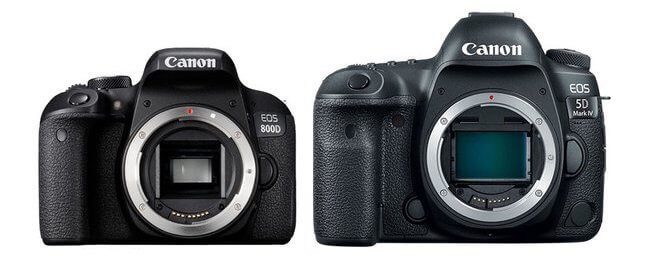

In addition, the D800 also has superior moisture and dust protection to the D610.

The D800 has a magnesium shell covering the entire body of the camera, which results in much better protection of the internal parts of the camera. While the build quality is excellent on both cameras, the D610 only uses magnesium construction on the top and bottom plates of the camera, with plastic used everywhere else. Since the D610 is shooting at a lower resolution, the camera is able to process images faster.Īnother significant difference between the two cameras is the materials used in their construction. The reason for the slower speed is the time it takes the D800 to process files which are massive in size due to the camera’s 36.3 megapixels. The Nikon D610 is a much faster camera as well, with the ability to shoot at 6 frames per second, while the D800 can only shoot at 4 frames per second.
Nikon d810s vs canon full frame dslr professional#
It is important to remember that the Nikon D4, which is Nikon’s top of the line professional camera, only has 16 megapixels.

In reality, the additional 12 megapixels on the D800 do not mean much, as the overall quality of the images each camera produces is virtually identical. While the 36.3 megapixels in the D800 is amazing, the D610 is also an extremely capable camera although the megapixel count is a mere 24.3. This allows the photographer to concentrate on capturing images instead of messing around with menus!Īnother difference between the two cameras is that the D800 has a significant advantage in the overall megapixel count. The U1 and U2 settings are a major time saver to photographers changing settings constantly. While the D800 has the ability to customize settings, the photographer has to retrieve the settings thru the menu and not thru a dedicated dial. The biggest difference between the two cameras is the lack of a U1 and U2 settings on the D800, while it is available on the lower priced D610. Other similarities include similar sensor sizes of 35.9mm x 24mm, 100 % coverage in the viewfinder, the ability to shoot HD video at 1920 x 1080 at 30 frames per second, 3.2” fixed LCD display, built in flash, built in autofocus motors and the ability to accept a variety of accessories allowing for GPS, Wireless and Wi-Fi capability. In addition, both the D610 and D800 are heavy enough to balance well in the hand with a variety of lenses, but light enough to carry around for extended periods of time. There is no fatigue or cramping of the hands, which many experience when shooting the smaller DX cameras offered by Nikon. The dual memory slots can be set up in a number of different configurations, including still photos to one card and video to the second one or RAW files on one card and JPG files on the other card.īoth cameras feel great in the hand even after extended periods of time using them. The D610 uses two slots, which will hold SD, SDHC or SDXC cards, while the D800 uses a single CF card in one slot and a SD, SDHC or SDXC card in the other slot. The D610 and the D800 also have dual memory capacity, which allows the camera to store back up images on an additional memory card.
Nikon d810s vs canon full frame dslr iso#
Also both cameras have the ability to have ISO expanded to up to 25,600, as well as down to 50. This results in sharp pictures being delivered at ISO ranges of 100-6400. The D610 and the D800 share a number of similarities with the most important one being the ability of both cameras to take outstanding images, even in low light! While the D800 has more megapixels than the D610, it is impossible to tell the difference in the quality of the images.Īn important reason for the excellent images is their ability to shoot at high ISOs, without excessive noise reducing processing of the images. *Information from Nikon USA website, including pricing. Just the Facts, A Side-By-Side Comparison The D800 is the widely anticipated replacement of the D700 camera, which was first introduced in 2008.

The Nikon D610 is an “improved” version of the slightly older D600, which was initially launched in 2012, as an entry-level full-framed camera. The Nikon D610 and the D800 are two excellent full frame cameras offering excellent features, which will satisfy the needs of both amateur and professional photographers for years to come.


 0 kommentar(er)
0 kommentar(er)
